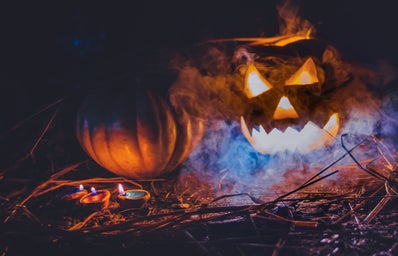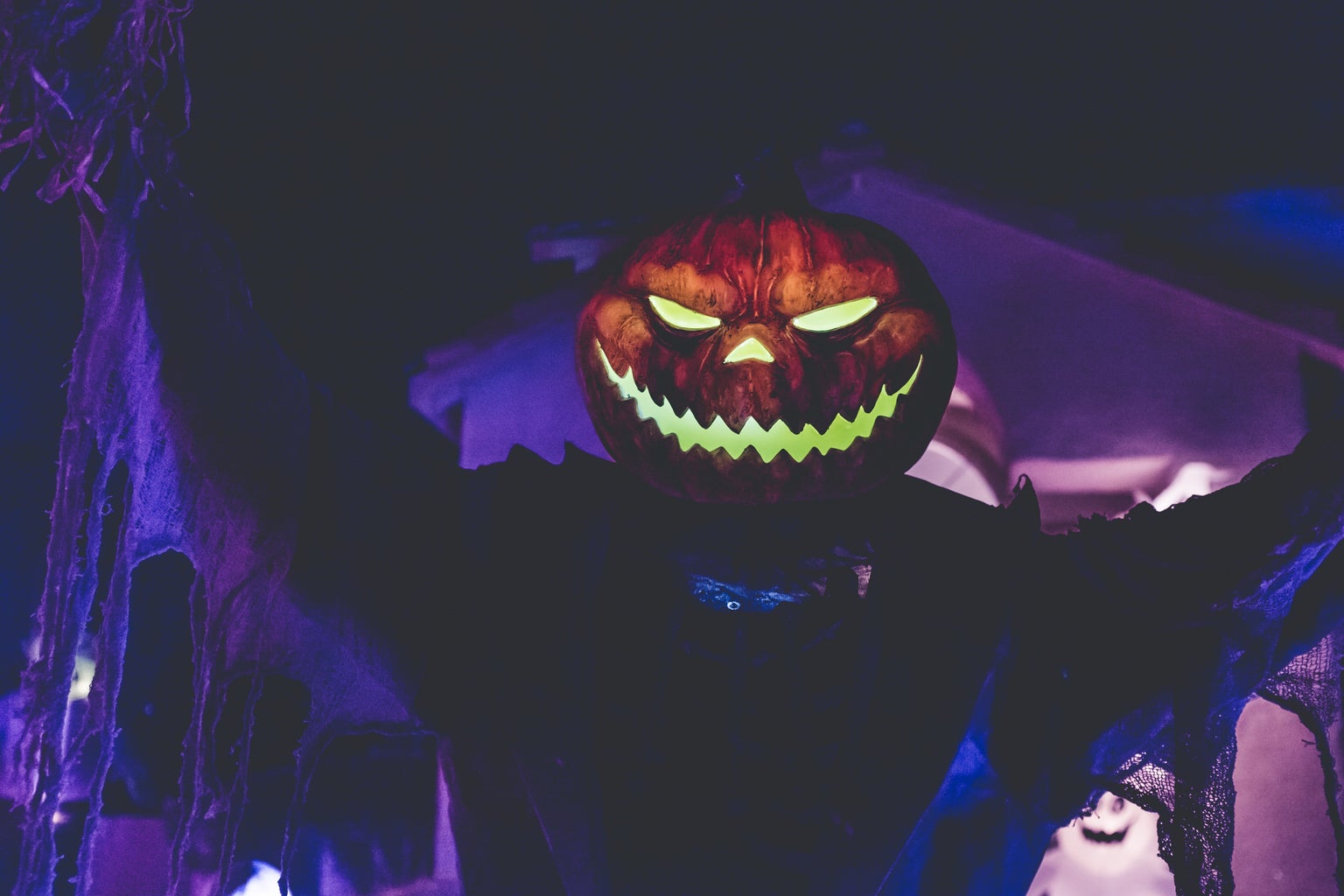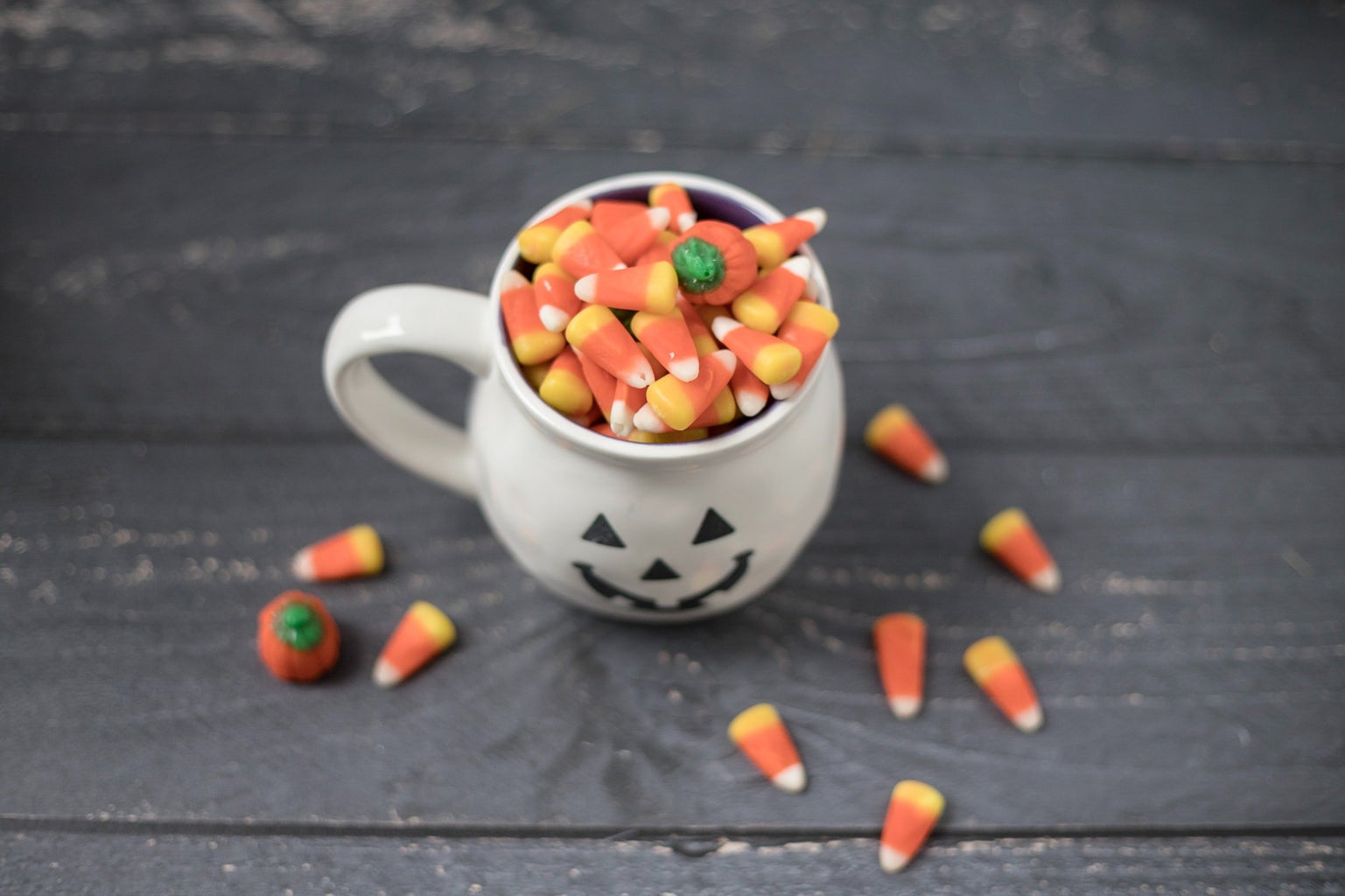Halloween is a tradition that dates all the way back to The Celts who lived in Europe over 2,000 years ago. Back then, Halloween was an ancient Celtic festival called Samhain (pronounced sow-in). The 31st of October was a celebration of the end of summer and the harvest season, and was believed to be the day when the ghosts of the dead returned to earth. The first of November, also known as the Celtic New Year, marked the beginning of the dark, cold winter. In the 7th Century, the Catholic Church’s influence grew in Europe and they frowned upon pagan rituals like Samhain. The Vatican merged Samhain with a church-sanctioned holiday which designated Nov. 1 as All Saints Day to honour martyrs and the deceased faithful. Both holidays had to do with the afterlife and life after death. All Saints Day morphed into to Hallowmas (“Hallow” meaning holy or saintly, making the word translate to ‘Mass of the Saints’), which finally morphed into All Hallows Eve on Oct. 31, which we now know as Halloween.
The Living and The Dead
During this time of year, the Celts believed that the veil between the land of the living and the dead would be at its weakest, allowing residents of the afterlife to roam amongst us. The Celts would build large bonfires to ward off the ghosts and light their way back to the afterlife. Nowadays, we merely light candles outside our homes and inside of pumpkins, making what we now call Jack-o’-Lanterns.
Have You Heard of Stingy Jack?
Have you ever wondered why we carve pumpkins out of all fruits (yes, it’s a fruit), for Halloween with a long jagged smile lit by candlelight? This tradition began over 1,000 years ago in Ireland and is based on an Irish folktale about a man named Stingy Jack. The classic version of this tale paints a man named Jack (if that wasn’t established already) as a manipulative man with no morals or empathy. His likeness peaks the interest of Satan, who now wants to meet him. One night, Jack is staggering on a path from the bar back to his home, and while on his way, he comes upon a mutilated corpse with an unsettling look on its face. Jack stares at the face, when the eyes move slowly towards him and lock onto his drunken gaze. The corpse then speaks, claiming to be Satan. Jack realizes that the devil is here to claim his soul. Before he can be dragged down with him into the fiery depths of hell, he asks if he could have one last drink. They make their way together back to the bar and order enough drinks to kill a fellow. True to his name, Jack is too stingy to pay for the drinks, so he convinces Satan to turn himself into a silver coin which he would pay with, and when the barkeeper’s attention was elsewhere, he could transform back and sneak out. The devil agreed as he saw no reason not to, but instead of paying with him, Jack shoves the silver coin into his pocket where it rests beside a silver cross, trapping him. Jack made a deal with the devil that if he could get 10 more years of life, Satan could revert back to his form.
Ten years later, Satan returns to collect Jack’s soul, however, Jack first asks if the devil could pick out an apple for him from a nearby tree. Whilst in the tree, Jack surrounds it with crosses, once again trapping the devil. He is released once more upon agreeing to never return Jack’s soul.
A few years later, Jack dies from the over consumption of alcohol and is met with the gates to heaven. But upon arrival, God, himself, dismisses Jack from paradise. His soul is then sent down to hell where Satan waits for him eagerly. However, Satan never breaks his promise and doesn’t open his gates for Jack. With no place to go, Jack is cursed to spend eternity roaming purgatory with a single ember from the devil (which is uncharacteristically kind of him) which he kept in a hollowed out turnip. From then on, he was called Jack o’ the Lantern, which was later shortened to Jack o’ Lantern. Some say that on All Hallows Eve, you could see his soul wandering around looking for another soul to join him in his misery.
Ghost lights––or more commonly known from Pixar’s film Brave as Will-o’-the-Wisp––are orbs of lights often seen by travelers at night. Back in the day, when floating lights were seen outside around this time of year, they were believed to be Stingy Jack or other evil spirits in search of other helpless souls. People from Ireland and Scotland would then carve their own versions of Jack’s lantern into turnips or potatoes, placing them on window sills or doorsteps to protect themselves and scare off these spirits. In England, beets were used, and in America, pumpkins (a fruit native to this part of the world) were soon found to be perfect for such a tradition.
The Best Part of The Holiday
During Samhain, villagers would disguise themselves in costumes made from animal skins to ward off phantom visitors. They would also set up banquet tables filled with beautifully prepared food from the season’s harvest to spite the unwelcome spirits in hopes of placating them well enough that they would leave.
Centuries later, people would dress up as ghosts, demons and other heinous creatures while performing so that they could receive food and drinks in exchange.
By the ninth century when Christianity spread throughout Celtic lands, the poor would visit wealthier families, and in exchange for praying for the souls of the homeowners’ deceased relatives, they would receive pastries called soul cakes. This was called “souling”, a practice later upheld by children who would go from door-to-door asking for food or money.
Irish immigrants during the potato famine of the 1840s, brought in their customs like bobbing for apples and playing tricks to America (which gradually turned into more dangerous and vandalistic extortion practices). Children would dress up in funny costumes to mask their identity while they would unscrew your front gate, put your cat in a tree or cover your house with toilet paper and eggs. Residents would bribe the mischievous children with candy, food or money (treats) to stop their vexatious trickery. This is when the greeting ‘trick-or-treat’ began. Basically, kids in disguises would go from house-to-house playing tricks on neighbours until they were bribed with treats to leave.
Now, trick-or-treating has become a good excuse for kids to dress up and fish for free candy as well as free compliments. It has become dentists’ favourite holiday as they know to expect a wave of children with cavity riddled teeth and a spike in their income.
Halloween has evolved so much throughout the years, but it remains my favourite despite all the changes. Who doesn’t love free candy and a good excuse to scare people with horrific stories and frightening pranks? Were you already aware of the origins of Halloween? I would love to hear your favourite Halloween pranks and costume ideas for this year. The scarier the better! Let me know on any social media platform provided. Just the other day, I saw a hand dangling from the trunk of a car in front of me and I’m still not sure if it was real or not…





